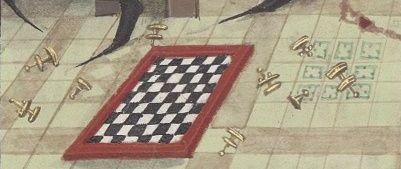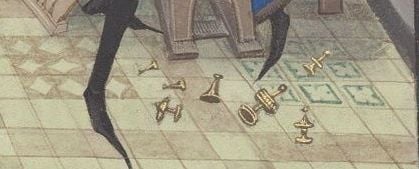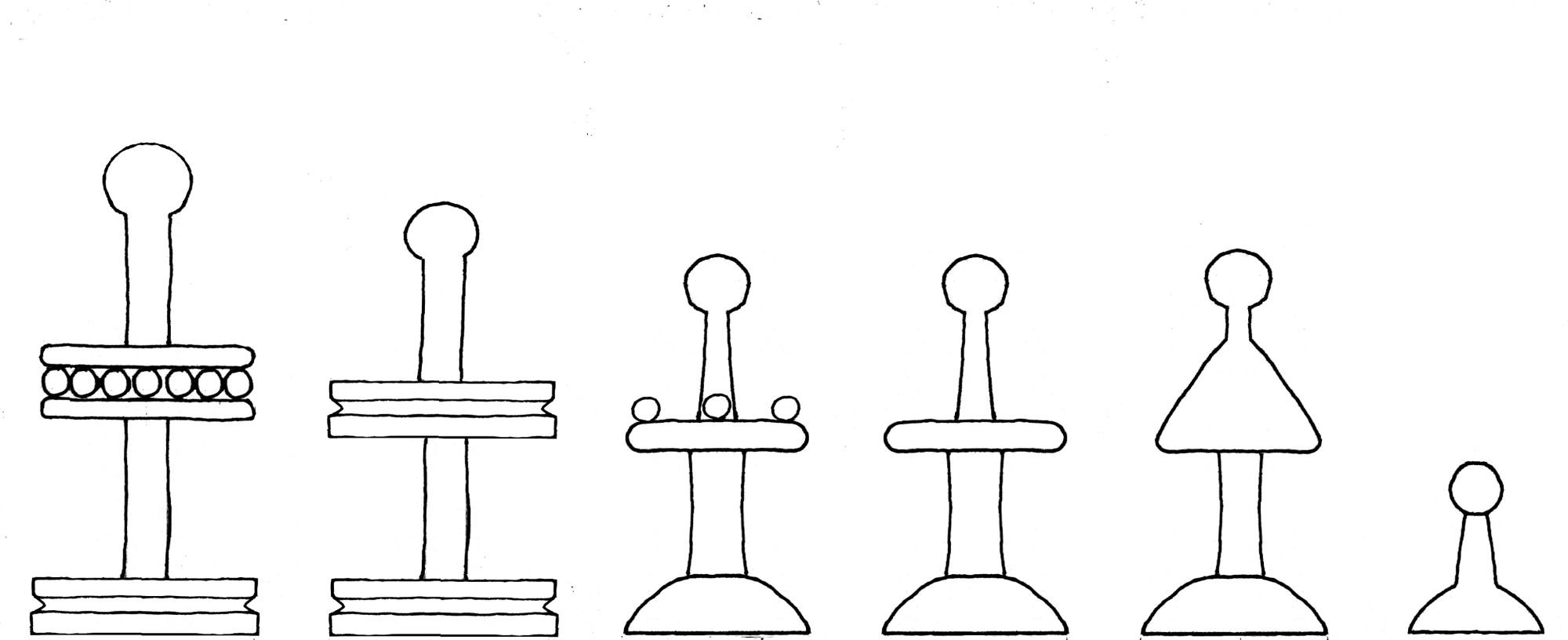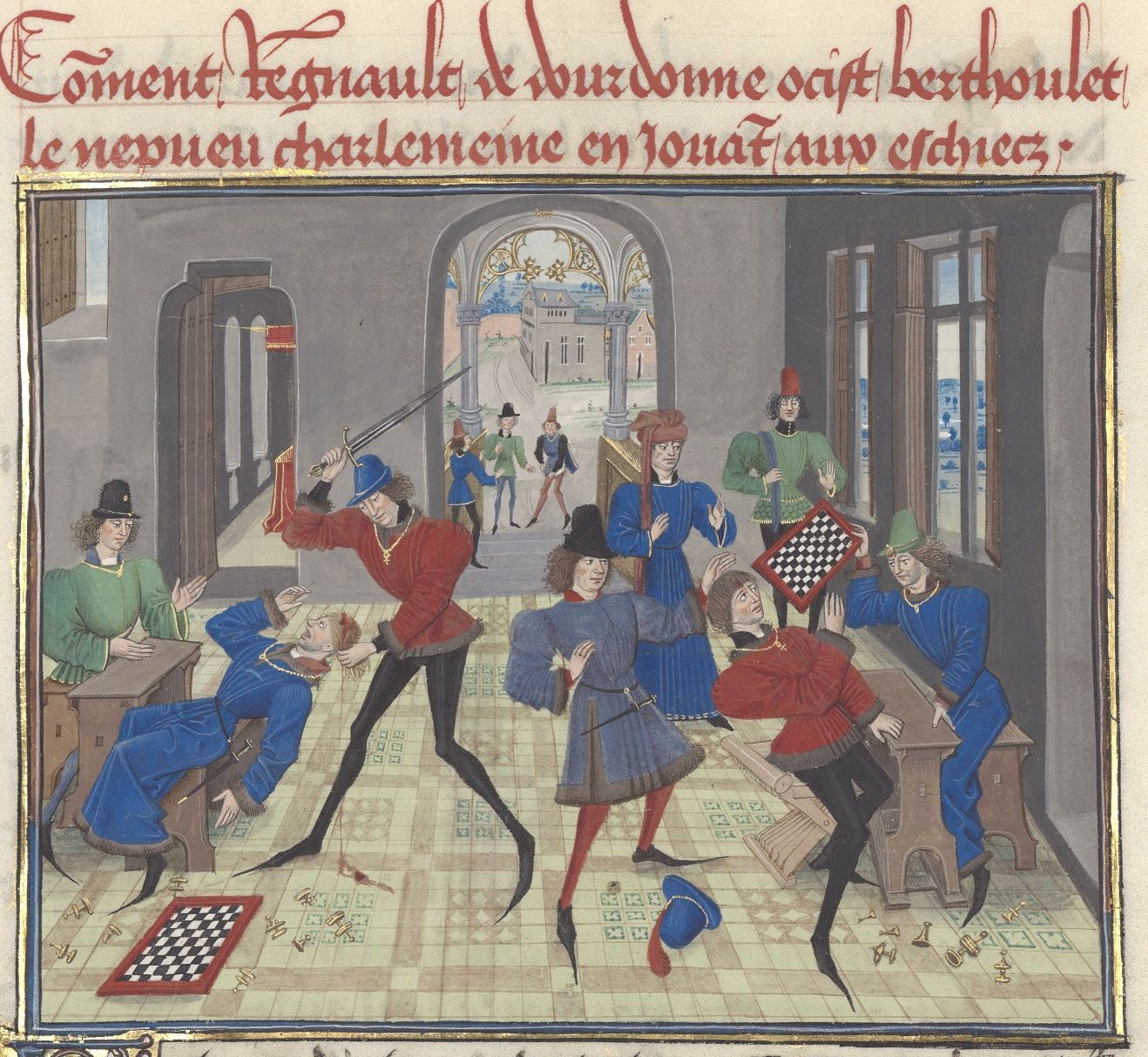The chess set from the Regnault de Montauban manuscript, c. 1470
Renaud de Montauban (the most common of many spellings) was a fictional hero and knight whose story first appeared in a twelth century Old French chanson de geste (song of heroic deeds), called Les Quatre Fils Aymon (The Four Sons of Aymon). The story of Renaud was a success throughout Europe and was adapted into Dutch, German, Italian and English versions throughout the Middle Ages. In an early part of the story, Duke Aymon took his four sons - Renaud, Richard, Alard and Guiscard - to Charlemagne, to be presented during a Pentecostal feast. Renaud quarrels with Bertolais, a nephew of Charlemagne, over a game of chess, and kills him. The four brothers flee, and their struggle with Charlemagne begins, ending only when Renaud agrees to join the Crusades. Much more about the story of Renauld's fight over a game of chess can be found here.
In the French late-fifteenth century four-volume History of Regnault de Montauban (1468-1470), the chess scene is depicted (in volume 2) as a fight between several people, one of whom has a sword. There are two chess boards, one of which is being used as a weapon. The chess pieces have been carefully painted as they tumble onto the floor. They are in two groups and are a very clear representation of a late-fifteenth century French chess set.

The king and queen are probably the most ornamented pieces, and only one of each is illustrated. The king, seen in the right-hand group, has a base with a single incised notch, and a slender stem, terminating in a ball. Half way up is a single tier which has beading around its circumference. The queen is in the left-hand group. She is similar to the king but with an incised notch in place of the beading.

The bishop, knight and rook are less easy to determine, though all the remaining pieces, apart from the pawns, fall into three groups. All three have a simple base with a narrow stem. In the first (of which three appear in the left-hand group) there is a single tier - a disk with small balls around its upper surface. The stem then continues above to a terminal ball. The second (of which one appears in the right-hand group and three in the left) is very similar, but lacks the ring of small balls on the disk. The third (two appear in the right-hand group) has a short stem from the base, above which is a cone, and then a further short stem with a terminal ball. It is proposed here that these are the bishop, knight and rook in this order, mainly because the elaboration of the pieces follows in the direction from the king down to the rook. The pawns are simple cones with a terminal ball (two appear in the left-hand group and three in the right).


